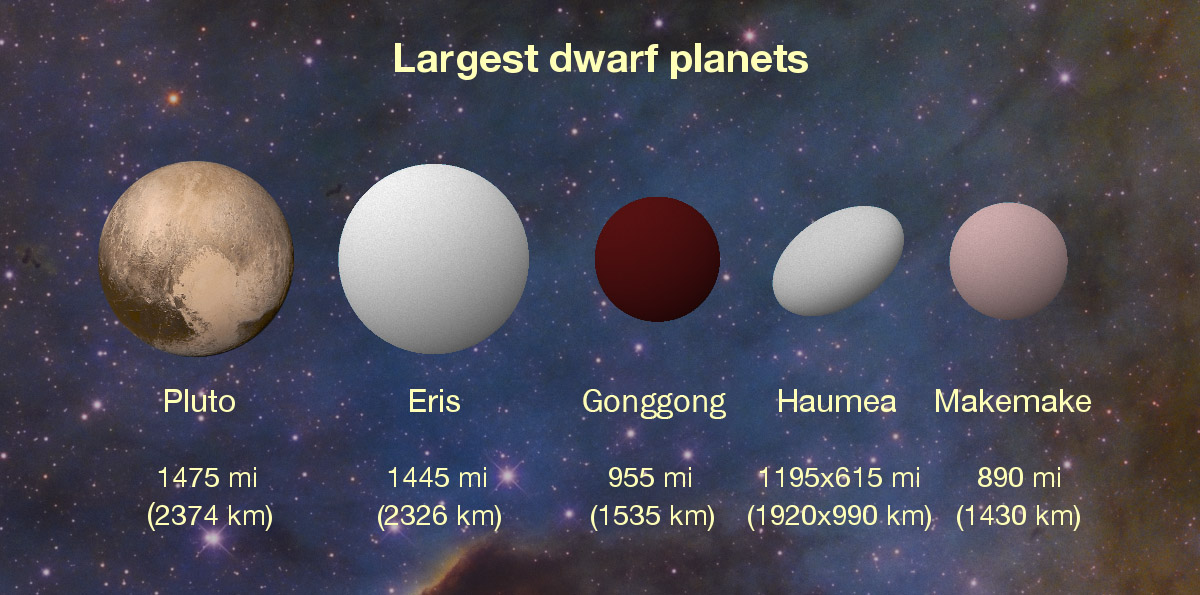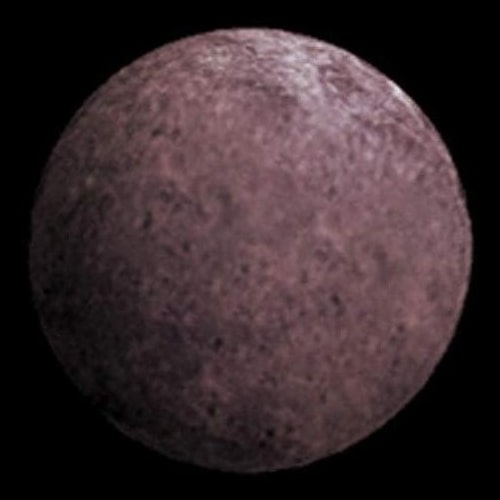Gonggong
Formerly 2007 OR10, Gonggong is a minor planet member of the Kuiper belt scattered disk beyond Neptune and a possible candidate to be designated a Dwarf planet of the Solar System.
It has a highly eccentric and inclined orbit during which it ranges from 34–101 astronomical units (5.1–15.1 billion kilometers; 3.2–9.4 billion miles) from the Sun. It is the sixth-farthest known Solar System object.
Gonggong is in a 3:10 orbital resonance with Neptune, in which it completes three orbits around the Sun for every ten orbits completed by Neptune. Gonggong was discovered in July 2007 by American astronomers Megan Schwamb, Michael Brown, and David Rabinowitz at the Palomar Observatory, and the discovery was announced in January 2009.
At about 1,535 km (955 miles) in diameter, Gonggong is largest than Makemake Dwarf planet, and is the fourth-largest known trans-Neptunian object.
The larger size also implies higher gravity and a very dark surface -- the latter because the same amount of light is being reflected by a larger body. This dark nature is different from most dwarf planets, which are much brighter. Previous ground-based observations found Gonggong has a characteristic red color, and other researchers have suggested this might be due to methane ices on its surface.
With a rotation period around 45 hours, Gonggong rotates slowly compared to other trans-Neptunian objects, which typically have periods less than 12 hours. The slow rotation of Gonggong may have been caused by tidal forces from its natural satellite, named Xiangliu.
The object is named after Gònggōng, a Chinese water god responsible for chaos, floods, and the tilt of the Earth. The name was chosen by its discoverers in 2019, when they hosted an online poll for the general public to help choose a name for the object, and the name Gonggong won.

Gonggong is the third largest in the current list of about half a dozen dwarf planets (official and unofficial). In 2016 Gonggong's measurement was determined at 1,535 km in diameter, about 100 km larger than the next largest dwarf planet, Makemake, or about a third smaller than Pluto. Another dwarf planet, called Haumea, has an oblong shape that is wider on its long axis than Gonggong, but its total volume is smaller and is therefore represented here in fourth place.
Konkoly Observatory/András Pál, Hungarian Astronomical Association/Iván Éder, NASA/JHUAPL/SwRI
| Gonggong data | |
| Discovery by | Megan Schwamb, Michael E. Brown, David Rabinowitz |
| Discovery | jul-07 |
| Diameter | 1,535 KM |
| Category | TNO |
| Eccentricity | 0.4994 |
| Inclination | 30.6273° |
| Semi-major axis | 67.485 UA |
| Perihelion | 33.781 UA |
| Aphelion | 101.190 UA |
| Orbital period | 554.37 años |
| Albedo | 0.14 |
| Absolut magnitude | 2.34 |
| Satellites | 1 |
Information: NASA and Wikipedia.

